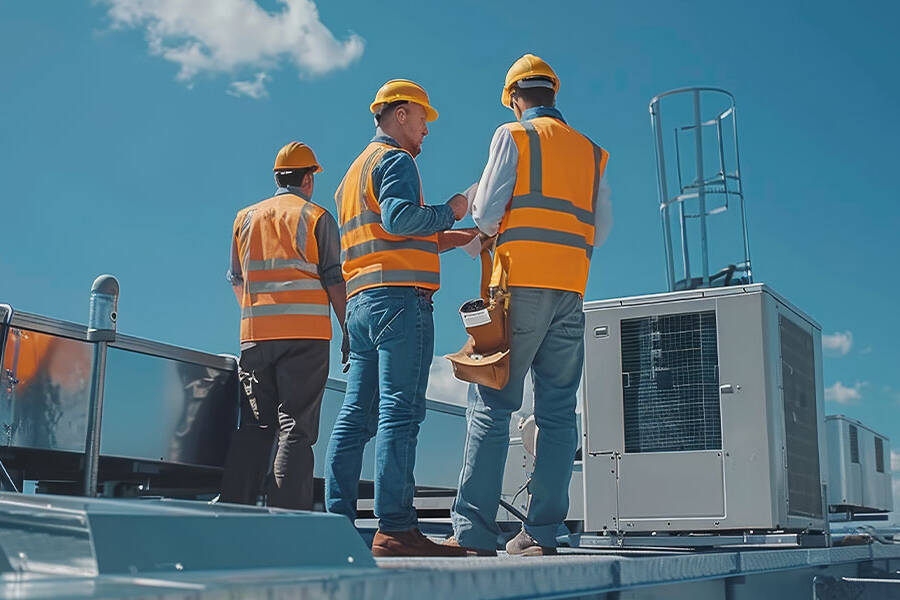Blog & News
Leveraging IoT to Mitigate Humidity and Prevent Mold in Multi-Unit Residential Buildings
Mold growth is a pervasive issue in multi-unit residential buildings, often resulting from high humidity levels or undetected water leaks. This persistent problem can lead to health concerns, structural damage, and expensive remediation efforts. However, with the advent of the Internet of Things (IoT), building managers and owners now have a powerful tool at their disposal to efficiently tackle humidity and prevent mold growth before it negatively impacts their bottom line.
Understanding the Problem
Mold thrives in environments with elevated moisture levels, particularly in areas with poor ventilation. In multi-unit residential buildings, humidity can become a significant issue due to factors like insufficient HVAC systems, shared walls, plumbing leaks, and daily resident activities such as cooking and showering. Traditional methods of mitigating humidity tend to be reactive, only addressing the problem once mold has already developed.
How IoT Can Help
IoT technology offers a proactive approach to managing humidity and preventing mold. By deploying a network of smart sensors and devices, building managers can continuously monitor environmental conditions in all units and common areas, and take timely action to maintain optimal humidity levels throughout their property. Here are 3 of the most powerful ways IoT can be leveraged to avoid instances of costly mold growth:
- Real-Time Monitoring
IoT sensors can be strategically placed throughout a building to monitor temperature, humidity, and air quality in real-time. These sensors provide continuous data that is visible to onsite teams via a centralized platform, allowing for the immediate detection of abnormal humidity spikes that could lead to mold growth. For instance, sensors can be installed in high-risk areas such as basements, bathrooms, kitchens, and utility rooms, where moisture levels tend to be higher. Delivering these actionable insights enables maintenance personnel to address issues before they become severe, avoiding substantial remediation expenses and the resident displacement costs that often follow. Additionally, maintaining a healthy indoor environment ensures compliance with health and safety regulations and boosts resident satisfaction by providing a more comfortable living space. Through detailed analytics and automated alerts, building managers can effectively prioritize maintenance tasks, optimize resource allocation, and implement targeted interventions – ultimately preserving the value of building infrastructure and reducing long-term operational costs.
- Automated HVAC Systems
Integrating IoT with HVAC systems enables automated control based on the data collected by sensors. For example, if humidity levels rise above a certain threshold, the HVAC system can automatically adjust to increase ventilation or activate dehumidifiers to ensure humidity levels are consistently kept in check without requiring manual intervention. By utilizing such automation, HVAC systems can dynamically respond to real-time environmental changes, optimizing indoor climate conditions and enhancing property-wide energy efficiency. What’s more, this integration helps to extend the life of HVAC equipment by reducing the strain of constant manual adjustments and ensuring that systems operate within optimal parameters. Automated control also allows for the fine-tuning of settings to match specific needs of different areas within a building, addressing unique humidity challenges in each space.
- Predictive Maintenance
In addition to monitoring a building for concerning climate conditions, IoT building management systems can provide valuable insight into the health of HVAC equipment by continuously collecting data on various parameters such as runtime. Inefficiently performing HVAC units can often signal emerging maintenance issues like malfunctioning compressors, clogged filters, or leaky ducts. Not only are these common precursors to increased moisture levels in a building, but they are also problems that can quickly lead to system failures if unaddressed. HVAC units that run at peak efficiency minimize the risk of unexpected breakdowns, which can severely disrupt building operations and inconvenience residents. Furthermore, the data collected from IoT devices can be used to optimize maintenance schedules, ensuring that inspections and repairs are carried out at the most effective times. This leads to improved resource allocation, as maintenance personnel can focus on critical tasks rather than routine checks that may not be necessary.
Benefits of IoT-Driven Humidity Mitigation
Implementing IoT solutions for humidity control offers numerous benefits:
Healthier Living Environment: Preventing mold growth leads to improved indoor air quality, reducing the risk of respiratory issues and allergies among residents.
Cost Savings: Proactive humidity management can significantly reduce the costs associated with mold remediation and structural repairs.
Energy Efficiency: Automated HVAC adjustments ensure efficient use of energy, contributing to lower utility bills and a smaller carbon footprint.
Increased Property Value: By keeping maintenance and operational costs to a minimum, properties can maximize profitability and generate a higher NOI .
Property operators looking to utilize the power of IoT for humidity control and mold prevention should prioritize a building management system that encompasses features such as real-time monitoring, automation, advanced analytics, and maintenance alerts – much like the capabilities offered by TrustHab.
TrustHab’s IoT-driven Humidity Mitigation solution has been adopted by the nation’s top property operators to deliver robust protection against the threat of mold growth, leading to significant cost savings and increased profitability. Don’t just take our word for it, explore our client success stories to witness the transformative impact of TrustHab’s solutions for yourself.
Interested in learning more? Contact us today to schedule your complimentary demo of TrustHab’s Humidity Mitigation solution and discover the most cost-effective way to say goodbye to mold once and for all!




